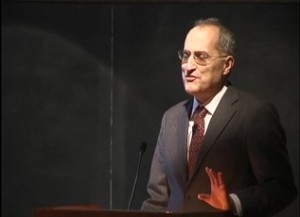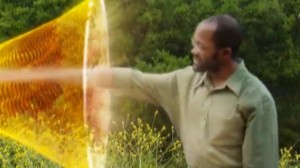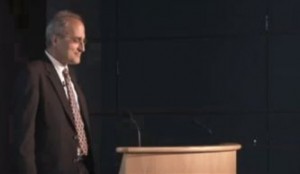It is midnight and I really should get to sleep in order to wake up and work some more on editing the final exam for my class so that it can go to the printer by noon. But I’ve got several pokes from people clamouring to find out what The Project actually is, and I promised yesterday I’d start to spill the beans. Thanks for the interest! I think I’d better get at least some of it out there or I’ll have an angry mob by morning! So here goes. I will drag out the draft I sketched yesterday and beat it into shape:
So, as you may have guessed, The Project, which I’ve been mentioning here since a post way back in February, is a writing project, but it is somewhat different from what you might expect. The bottom line is that I hope that at some point into future you will be able to purchase a copy of your own, and that you will find it instructive, exciting, and enjoyable. At least.
Yes, it is a book about science. However… Well, here’s the thing. Over many years, people (friends, colleagues, potential agents and publishers, blog readers, etc) have been asking me when I am going to write my book. You know, the popular-level book that every academic who is interested in the public understanding of their field (as you know I am from reading this blog) is expected will write at some point. To be honest, I have given it some thought over the years, and it has been something I figured I might do at some point. In fact, several different ideas have occurred to me over the years, and I may well implement some of them at some point.
But a major thought began to enter my mind well over ten years ago. In my field, there is a rather narrow range of models for the shape of such books, usually involving about 80% of it being a series of chapters covering all the standard introductory material (some relativity, some quantum mechanics, and so forth) for the lay reader, before culminating in a chapter or two of what the researcher really wants to tell them about: some aspect of their research. This is a fine model, and it is great that people continue to write such books, and I will no doubt use that model one day, but to be honest, I don’t think there is any urgency for me to add to the canon yet another one of those books. Moreover, if you line examples of that type of book up against each other, you see that the […] Click to continue reading this post →
 I’m lounging around. In Cincinnatti Ohio. Why? Well, it has been a long day, and I’m tired. I spent the whole day yesterday traveling to get here, changing planed in Chicago, eventually getting to my hotel at 10:00 pm, having arisen at 6:00am. I spent the flying time thinking about physics and writing the talk I was invited to give here as part of the regional SPOCK meeting at the University of Cincinnatti. The letters stand for something, but I can’t recall what it is right now. It does not mean, as the title might suggest, that several emotionally-challenged and otherwise tv-cliche-handicapped individuals were meeting to discuss arcane matters in a room somewhere. It was a meeting of several people from the region’s string theory community to discuss…. Ok, ok, Ok…stop giggling!
I’m lounging around. In Cincinnatti Ohio. Why? Well, it has been a long day, and I’m tired. I spent the whole day yesterday traveling to get here, changing planed in Chicago, eventually getting to my hotel at 10:00 pm, having arisen at 6:00am. I spent the flying time thinking about physics and writing the talk I was invited to give here as part of the regional SPOCK meeting at the University of Cincinnatti. The letters stand for something, but I can’t recall what it is right now. It does not mean, as the title might suggest, that several emotionally-challenged and otherwise tv-cliche-handicapped individuals were meeting to discuss arcane matters in a room somewhere. It was a meeting of several people from the region’s string theory community to discuss…. Ok, ok, Ok…stop giggling!
 It was a fun week in the string theory class this week, as we got to some major landmarks that are always fun to teach. We’ve uncovered the extended objects called D-branes (see numerous previous posts for how useful and important these objects are in string theory research) in all their glory in the lectures before, and deduced lots of their properties, such as the form of the action that determines how a D-brane moving in spacetime responds to the various fields (including the geometry) created by the string theory. That’s all fun, but then the key thing to do next is to compute the mass of these dynamical objects, or the mass per unit volume – the tension. Computing it fully, with no hand-wavy factors. Your mass measures how strongly you interact with gravity. So you can measure it by studying the gravitational interaction between masses. (You do that when you step on a scale to measure your weight… well the scale does it by showing how much force it takes to stop you from falling through the floor toward the center of the earth…)
It was a fun week in the string theory class this week, as we got to some major landmarks that are always fun to teach. We’ve uncovered the extended objects called D-branes (see numerous previous posts for how useful and important these objects are in string theory research) in all their glory in the lectures before, and deduced lots of their properties, such as the form of the action that determines how a D-brane moving in spacetime responds to the various fields (including the geometry) created by the string theory. That’s all fun, but then the key thing to do next is to compute the mass of these dynamical objects, or the mass per unit volume – the tension. Computing it fully, with no hand-wavy factors. Your mass measures how strongly you interact with gravity. So you can measure it by studying the gravitational interaction between masses. (You do that when you step on a scale to measure your weight… well the scale does it by showing how much force it takes to stop you from falling through the floor toward the center of the earth…) 

 This always catches people off guard (myself included), so I thought I’d post a little reminder. The deadline for applications to the Summer workshops at the Aspen Center for Physics is January 31st. That’s coming up soon, so to physicists interested in doing a research stay, start thinking about the dates you want to attend, finding funds for support, planning for things like childcare or summer programs for children if you have any, and so on and so forth. There’s a wide variety of excellent […]
This always catches people off guard (myself included), so I thought I’d post a little reminder. The deadline for applications to the Summer workshops at the Aspen Center for Physics is January 31st. That’s coming up soon, so to physicists interested in doing a research stay, start thinking about the dates you want to attend, finding funds for support, planning for things like childcare or summer programs for children if you have any, and so on and so forth. There’s a wide variety of excellent […] 





